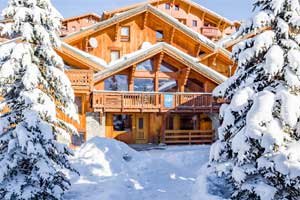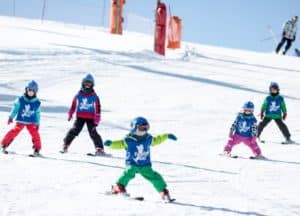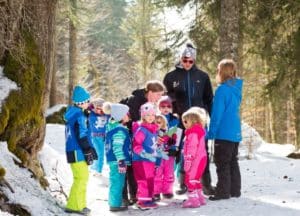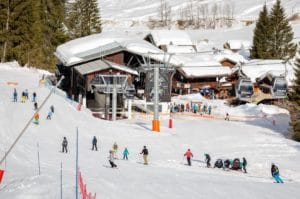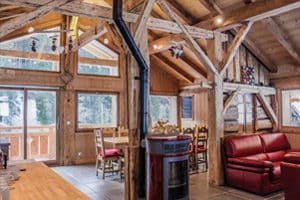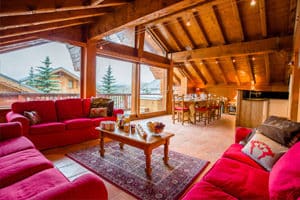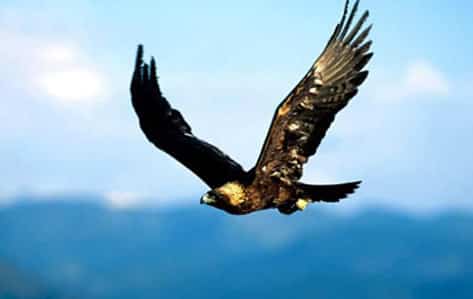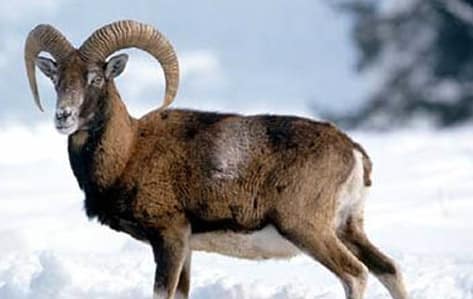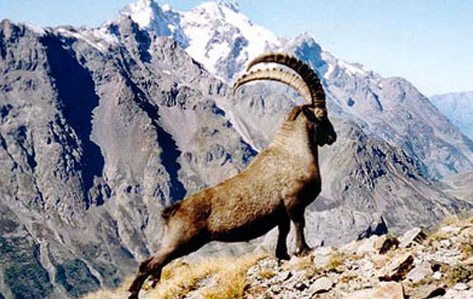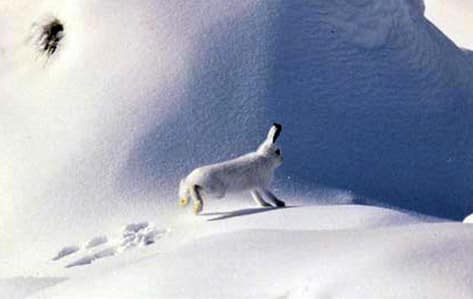Resort Nature Guide
Animals and Birds to look out for on your Family Skiing Holiday.
There is so much to see when you are out in the mountains skiing with your family including lots of exciting birds and animals that you will never see at home as well as some that will be familiar to you.
Family Ski chalets are all in great locations to observe wildlife around the chalet – for example it is possible to see Golden Eagles from all our chalets – and then more to see on the ski slopes. Generally you will see more in spring from mid-March onwards when bird migrants start to arrive and Marmots start to appear from their burrows on the mountain slopes, but at any time of the year you might see Mountain Hares and Stoats in their white winter coats, herds of Chamois and a variety of birds.
You will have to be patient and lucky to see some of the more elusive birds and animals but Chamois, Eagles, Bouquetin (Mountain Goats) and other spectacular creatures are regularly sighted by our guests. Take a small pair of pocket binoculars with you when skiing – also useful for spotting friends on distant slopes. Below are descriptions of what to look out for in each resort. To the right you (Bird Watching) can discover a list of the birds we have seen in each of the resorts. Please let us know if you see anything new!
Family skiing with Nature – Portes Du Soleil
The village of Ardent is brilliantly placed for nature observation: many forest birds come to the edge forest including Alpine specials such as crested tit, Nutcracker, Crossbill, Redpoll and Siskin and the stream is home to Dippers throughout the year and White and Grey wagtails in the spring; our sole sighting of a pair of Black Woodpeckers was only 100m from L’Eau Vive; and a Stoat has taken up residence under the bridge, again by L’Eau Vive.
The meadows and ridge of Chavache high above the valley of Ardent are especially interesting because the area is remote and not disturbed by skiing activity and people. It is our favourite hike in the summer when Marmots can be heard whistling and often be seen in meadows with an astonishing profusion of birds and butterflies. In the early and late season scanning the area with binoculars from any of Family Ski’s chalets will usually reveal a herd of Chamois and a pair of Golden Eagles can often be seen at any time of year.
At the top of the Ardent Bubble the lifts from Lindarets going up either side of the valley pass over rich forest and meadow habitat – the rare Black Grouse (local name, “Tetras Lyre”) has been seen here and flocks of Siskin, Redpoll and Crossbill are common throughout the winter. Higher up on the mountain slopes above the tree line you will see Ibex (Bouquetin) most likely in Spring as they regain the higher slopes after winter and also wild sheep (Mouflon) and Mountain Hare (Lievre Variable). Alpine Chough, Raven and Snow Finch will be seen at the highest altitudes throughout the winter. Another wonderful nature as well as ski trip is the excellent run from the top of the Ripaille lift behind the Point de Ripaille through the nature reserve to Grand Paradis on the way to Champery. As well as dramatic views of the Dents du Midi there is plenty to look out for on the way, including Red Squirrel and Beech Marten. The restaurant terrace on the trail through the woods is a good place to look for Alpine Accentor on the bird feeder there and Ring Ouzel, (mountain blackbirds) take up territories and can be heard singing mid-March on in the woods.
Family skiing with Nature – Reberty and The Three Valleys
At 2000m Reberty is in high Alpine pasture and the wide open views make spotting Golden Eagle, Peregrine, Merlin, Kestrel, Buzzard and Raven relatively easy – Kestrel and Merlin mostly in Spring but the others throughout the winter season. Surprisingly there is a resident flock of very clean-looking house sparrows in Reberty Village even in the coldest weather throughout the season. Later in the year they are joined by Black Redstarts singing their rustling-crisp- packet song from the chalet roofs. In spring the slopes above the chalet see Marmots emerging from their burrows, sometimes spotted from chairlifts – keep your eyes and ears open! The common little brown bird rising up into the sky and singing like a Meadow Pipit at home is a Water Pipit and with binoculars you can see the delicate apricot rose colour on the chest in spring.
Close by Reberty are a number of small shrubby areas which attract birds including Redpoll, Whinchat, Stonechat, Brambling and Chaffinch. Wheatear are common on these slopes in spring and Blue Rock Thrush are present on the quieter slopes. The size of this huge ski area leaves a lot of relatively undisturbed habitat on the edge of the lifted areas and it is more common to see Ibex (Bouquetin), Mountain Hare and Ptarmigan here than in other resorts. All the usual forest birds can be seen in the wooded areas on the lower slopes throughout the Three Valleys including Nutcracker, Siskin, Redpoll, Crossbill and Crested Tit.
The huge Tueda Reserve in the Meribel Mottaret Valley is particularly rich in wild-life: Mountain Hare, Ptarmigan, Black Grouse, Ring Ouzel are all here. With a bit of effort you can reach the Lac de Tueda just above Meribel Mottaret on skis and this is a rewarding trip late in the season in what is then the early Alpine spring.
Family skiing with Nature – Les Coches and Paradiski
Like Ardent, the situation of Chalets Les Arolles and David 1 and 2 on the edge of the forest is excellent for wild-life. Birch and other feed trees around the terrace attract Redpoll, Brambling and all members of the tit family and Goldfinches later in the year. Flocks of Redwing and Fieldfare are frequent and Mistle and Song Thrushes are usually around especially later in the season. The Plain Bois lift which starts 30m from the chalet is great for some early morning wild-life spotting – as well as a variety of birds including Nutcracker there are Red Squirrels (after hibernation) and we have seen a Beech Marten from this lift. The slopes just above the chalet are Alpine Meadow with plenty of rough areas and Wheatear, White and Grey Wagtail and Water Pipit are common in spring and we have seen a Stoat in winter ermine here. The area above the Pierres Blanches lift is dotted with rocky/shrubby outcrops and is a good area to see Alpine Accentor which sing as they take up territory in early spring. Paradiski is another big ski area with wild undisturbed areas at its boundaries, especially accessible through off piste tours, and the area has a good population of Ibex (Bouquetin) and Mouflon, usually on the lower wooded areas in winter but venturing higher up in spring. Marmot, Mountain Hare, Ptarmigan, Fox, Golden Eagle and the usual other raptors can all be seen.


